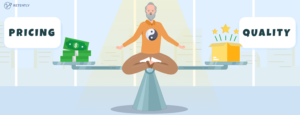Table of Contents
Does your company retain its customers or take them for granted? Customer retention is one of the most important aspects of growing your company, yet it’s one that many overlook, focusing more on acquiring new customers. Given that, it’s 6 times more expensive to attract new customers than to keep existing ones – the ignorance shall turn costly.
The longer your company can retain its customers, the greater the value of each customer you acquire. The key to retaining customers is extremely simple: deliver value and provide a great experience that makes customers want to stick with you and recommend you to others. Of course, besides doing that, you also need to track your results.
Well, by far the most effective way to measure customer satisfaction and loyalty is via the Net Promoter Score. After all, brands with high customer retention are usually companies with a high NPS score.
Since the best way to realize the importance of something is to see it in action, we’re going to discuss what companies with the highest NPS score in 2024 (Apple, Starbucks, Netflix, Tesla, Airbnb, and Amazon) have in common that sets them apart from their competitors.
Key Takeaways
- Companies with high NPS know that keeping customers happy is smarter – and cheaper – than always chasing new ones.
- These brands thrive by consistently delivering value through reliable, user-friendly products while providing personalized and seamless experiences across every customer touchpoint.
- By leveraging employee satisfaction, they deliver exceptional customer service, as engaged employees are more committed to creating experiences that drive loyalty and boost NPS scores.
- High NPS companies maintain accountability and credibility with users, making them a favored choice for repeat purchases.
Market Leaders’ NPS Scores
According to the data we gathered from various sources, these are the scores of the mentioned companies:
- Netflix’s NPS is 68, well above their competition;
- Starbucks’ NPS is a decent 77;
- Amazon’s NPS is a pretty high one at 62;
- Airbnb’s NPS is quite strong at 74;
- Tesla’s NPS is an astounding 96.
Given that an NPS score averages between -100 and 100, it’s clear the NPS scores of these top companies match their brands’ level of popularity.
So, what do those high scores translate into, specifically?
High Customer Retention and Growth
A high NPS score means a lot of customers are so happy with the brand that they are much more likely to stick around with it simply because they like the company alongside its products and its services.
Let’s see what level of customer retention each company has, in fact.
Amazon Customer Retention
Research has shown that 73% of people who try out Amazon Prime become paid members. What’s more, after the first year, 91% of the members renew their subscription for a second year, and 96% of those members pay for a third year as well.
Even today, Amazon is actually boasting amazing customer loyalty, at least according to Forbes; however, the company wasn’t quite ready to share exact customer numbers up until recently. Still, Amazon did state they signed up more new paid members in 2017 than any other year and in 2020 they mentioned having more than 200 million Prime members worldwide.
In 2024, Amazon reported impressive financial results, with total revenue climbing by 12% year-over-year in the US and 11% year-over-year in international markets.
Airbnb Customer Retention
The platform has grown very popular since it first launched, and Airbnb’s NPS score reflects that.
Although Airbnb’s revenue took a massive hit due to lockdowns throughout 2020, and did not reach the forecasted 60.8 million users by 2021, the audience steadily grew over the years.
According to statistics, Airbnb amounted to around 41.1 million users as of 2019, and the number was expected to grow to around 45.6 million by 2022 – and that’s only in the US! Worldwide, it’s estimated that Airbnb has around 150 million users.
Tesla Customer Retention
Tesla’s customer retention shows what an impact that huge NPS score has. Apparently, approximately 91% of Tesla owners said “they would buy again” from this brand. Tesla has actually been no #1 in the Annual Owner Satisfaction Survey over the years.
Tesla is therefore a leader in brand loyalty, being the only major automotive brand that showed an increase in sales of up to 21.4% in 2020 to date. At the same time, 25% of Tesla owners said they’re not even considering buying a different vehicle or doing business with another brand.
Although US demand for electric vehicles has been weaker than anticipated lately, the global market is on the rise, with electric cars projected to account for over 20% of worldwide sales in 2024. Therefore, Tesla’s outlook remains optimistic.
Netflix Customer Retention
Compared to its competitors, Netflix has an amazing retention rate. According to research, while a lot of Hulu (61%) and HBO Now (62%) subscribers pay for other streaming services, 80% of the Netflix subscribers don’t. In fact, the Hulu and HBO Now subscribers in question actually pay for Netflix on the side!
Plus, the average Netflix subscriber will stay with the company for 25 months. So, Netflix has enough time to earn back the money they spend on acquiring new customers.
As the pandemic was underway Netflix added a record of nearly 37 million additional customers in 2020. Although it was unlikely that they would be able to match the same result in the following years, Netflix still remained the leader of the streaming industry with over 221.8 million total paying subscribers by the end of 2021. As of the second quarter of 2024, Netflix reached over 277 million paid subscribers worldwide.
Starbucks Customer Retention
Consumers love Starbucks – even more since the company implemented its rewards program. Apparently, customer loyalty was so high that Starbucks’ program ended up holding more money than some banks.
Starbucks’ app is also used regularly by around 48% of app users, being the most popular amongst the restaurant loyalty rewards apps. It is also the second most-used mobile payment app (after Apple Pay) with 31.2 million users – showcasing the kind of customer loyalty the brand enjoys.
What Do These Companies Have in Common?
1. Simple, Reliable Services & Products
All these market giants have so many Promoters because those people love how easy their services/products are to use, and how reliable they are.
For example, the biggest initial selling point of Netflix was its simplicity – a great online entertainment service that saved you time. That trend continues to this day. Amazon has invested plenty of resources into making its sales, shipping, and return processes as simple and reliable as possible.
Tesla’s cars feature a very sleek, user-friendly design. Instead of multiple buttons, joysticks, and knobs, Tesla owners get to enjoy a large display screen that features easy-to-use on-screen touch controls.
Airbnb’s platform is fairly easy to use and get the hang of, and its mobile apps are simple to understand too. Since guests can message hosts before making a booking to ask questions and get to know them, it also makes the service quite reliable in the sense that people will know exactly who they will be doing business with.
As for Starbucks, they’re known for offering what some would call “the best coffee experience”, highlighting their reliability. Plus, their loyalty app lets people order ahead, meaning they can just place an order for a coffee and food, and pick it up on their way to work or home.
That’s not to say you need to do the exact same thing as these companies, but anything that makes your product a more convenient, reliable, and dependable choice will increase the value a customer gains from staying with you.
2. Fast, Straightforward, Quality Services
Offering reliable, easy-to-use services/products will do wonders for a company’s customer retention rate, but it won’t be enough to maintain it. The offering in question also needs to be fast and convenient, so that they save consumers time and effort.
Here are just some ways these companies achieve that goal:
They Make Customer Interactions with Their Brands Effortless
How? By collecting all the relevant info from customer complaints, support requests, and feedback, and sharing it across departments in their companies.
For instance, once you have registered a complaint with Amazon, you don’t have to keep repeating the problem over and over again. The records of customer complaints are persistently stored in Amazon’s centralized database, and can be accessed conveniently by any customer service executive.
Netflix makes it easy to call them through a toll-free number, and has an extensive “knowledge base” where users can usually find the solution they seek on their own. Their live chat is also known to be quite speedy, helpful, and easy to access since it’s clearly displayed on the website.
Tesla is well-known for providing a hassle-free, personalized customer experience, and they have even started allowing customers to escalate issues to a company executive. Tesla customer reps also communicate with other internal departments to improve the customer experience.
Something like this might not always increase the number of Promoters, but it goes a long way in reducing the outflow of Detractors, thereby improving your Net Promoter Score. It can also cause existing Promoters to act as your brand advocates, and potentially turn Passives into Promoters.
They Provide Single Sign-On Features
Netflix and Amazon are good examples – they let you access all their services using just one credential.
For instance, you can use your Amazon ID to place orders, access AWS services, or purchase books on Kindle. Similarly, you can purchase a single Netflix subscription and use the credentials to stream content from any of your devices.
But, wait… how does a single sign-on implementation improve NPS?
In rather simple terms, NPS is just a metric that evaluates the referability of your brand. The more referable your brand is, the better the NPS score.
By making users remember just one credential for accessing the entire ecosystem, you make the product experience simple and easy-to-use.
The counter-argument to using multiple login credentials has been that it makes the ecosystem secure and less susceptible to malicious attacks. But here’s the thing – should security come at the cost of convenience?
And even if you don’t consider that argument, think about this – if you have multiple login credentials for a single user, how are you going to accurately track customer behavior?
For example, if Amazon used different credentials to access different services, how would it accurately analyze brand advocacy? It’s perfectly possible for user X to love purchasing from Amazon but hate the Kindle experience. If he/she uses different login credentials to access these two services, there’s no way Amazon could accurately map the user’s behavior.
By associating a unique customer ID with every customer, you can accurately measure your NPS score and identify customer behavior (Promoters/Detractors/Passives). You can also personalize features, keep track of customer complaints, and deliver a consistent customer experience.
3. Amazing Customer Service
All these companies with high NPS scores offer a personalized, convenient, and satisfaction-oriented customer experience. People would argue they are some of the companies with the best customer service in the world.
Amazon employs large customer rep teams, makes it very easy for consumers to return items, and goes above and beyond to offer true customer satisfaction – whether it’s by letting people keep the items they accidentally ordered and shipping the right ones free of charge, or refunding small balances of 16 cents to customers when the price of an item they’ve previously ordered decreases.
When Netflix subscribers run into an issue, they know they will be talking with a real person on the other end – their employees are allowed to make their chats funnier and more engaging, which makes them more memorable for customers. Even the CEO would take calls every once in a while.
Starbucks focuses on making people feel like they belong to a community – even going as far as asking customers for ideas, and implementing some of them. For years, Starbucks had a dedicated platform, where customers could submit or vote for the most innovative ideas, which were then put forward to key decision makers. In the first 5 years, their customers generated more than 150,000 ideas and the company implemented 277 of those.
Starbucks baristas are also encouraged to remember customers’ names to make the whole experience feel more personal and create an ongoing customer relationship – a decent move, given that 75% of consumers are more likely to buy from a company that addresses them by name.
They also do not forget about the service basics which every Starbucks’ employee must master to be able to actually exceed expectations, create moments of connection and deliver inspired experiences.
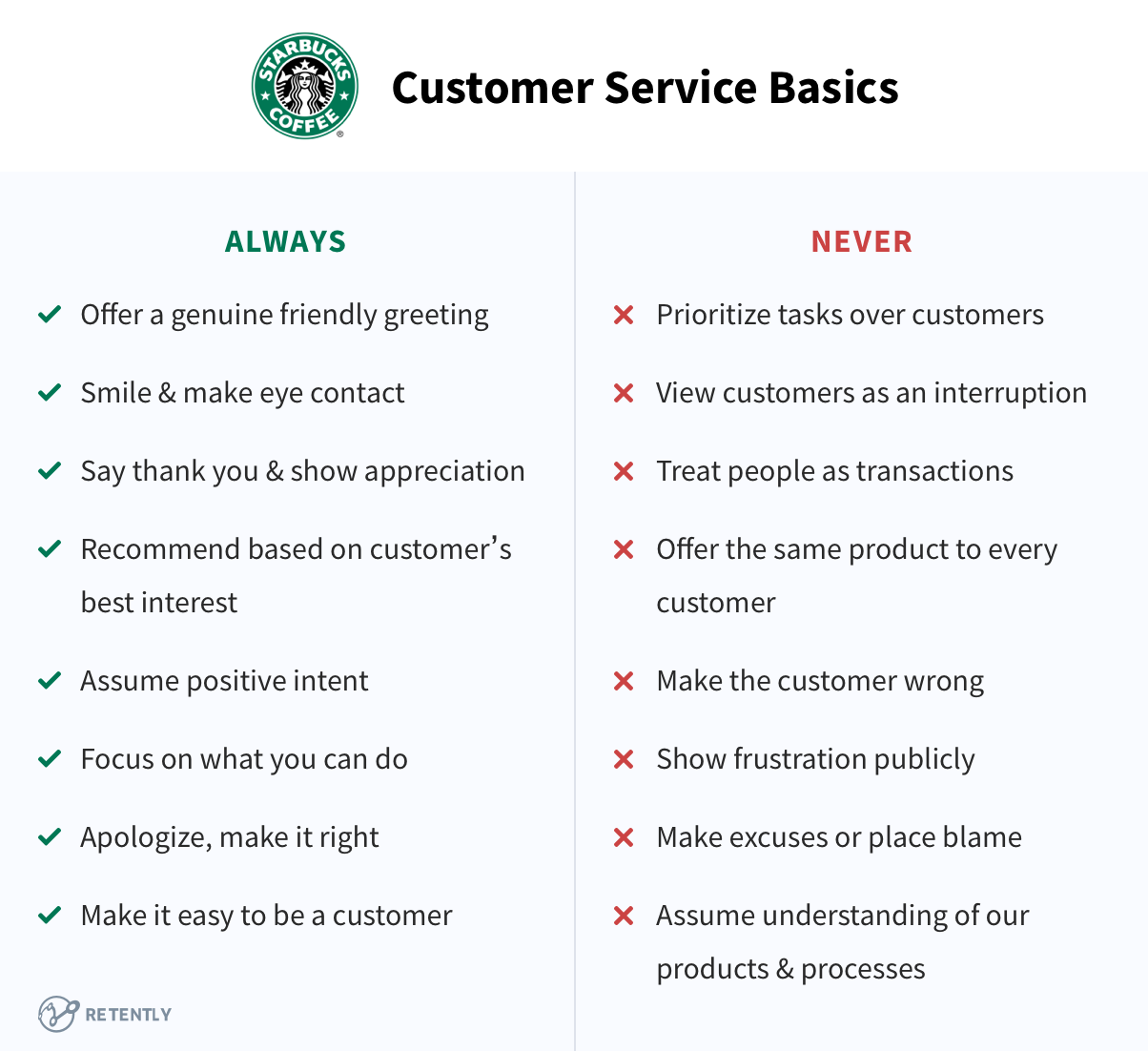
Tesla’s personnel is heavily focused on customer convenience, with some reps even paying customers a visit if they live too far away from a service center. Tesla’s sales reps (also called Product Specialists) are on the company’s payroll and don’t get sales commissions, meaning there is never an incentive for them to pressure buyers to make a purchase.
As for Airbnb, their customer support is really straightforward and well segmented (since they have 2 different users – hosts and guests). The company goes to great lengths to ensure users are happy – even offering a $1 million guarantee for hosts! Here are other examples showing how far Airbnb is willing to go to please their users.
But the main thing that is common across these brands’ customer service departments is this:
Quick, Responsive Omni-Channel Support
All these brands focus on responding as fast as possible to consumer demands and complaints, which is a smart move given that around 32% of consumers expect a response to a complaint or review they left online within 30 minutes.
Besides that, these companies acknowledge the importance of omni-channel support. After all, over 35% of consumers expect to be able to contact a customer rep on any channel. Also, businesses with omni-channel support have over 91% greater year-over-year customer retention rates.
Having support reps answer phones and emails is a nice start, but many customers are likely to contact you on social media, too.
4. Unique, Innovative Products and Offers
Most companies with high NPS scores stand out from their competition by offering consumers a unique value proposition. After all, when you become a unique option within your industry, you’re no longer “another” choice — you’re the only choice many people will consider.
Most of the brands we’re discussing in this article have an innovative value proposition. No online store even comes close to matching the scale of Amazon. There’s no streaming service with a larger range of content than Netflix (although Amazon’s competing service comes close).
Tesla established itself as a huge source of innovation in the automotive market, and Airbnb is the go-to option for city breaks for many people worldwide. While Airbnb did not pioneer a unique concept, they made their brand stand out through unique-looking, engaging website design and by popularizing the idea of guests sharing a place while the host was also there.
As for Starbucks, they certainly didn’t come up with the idea of selling coffee, but they innovated the way it’s sold. As early as 2008, Starbucks publicly announced they were changing the way they made coffee to offer the best possible experience. The company made its brand more appealing and unique by adopting and promoting the homely coffee-house vibe people saw in shows like “Friends.”
One way to achieve such results is to encourage your employees to think creatively. For instance, Netflix encourages employees to come up with ideas about how to improve the company’s services, form groups to discuss said ideas with other employees, and then ask other departments for input. Google is another good example (even though it’s not present in this article), as they allow engineers to spend 20% of their work week on projects that interest them.
Moreover, look for ideas everywhere. That includes listening to your customers and your team. If you are using Net Promoter Score surveys, ask customers how you could improve your product or service when asking for feedback.
Netflix is a good example of what can go wrong if you don’t take customer satisfaction surveys seriously. Long story short, the company’s CEO – Reed Hastings – wanted to change a subscription service that offered access to DVD rentals and unlimited on-demand streaming by splitting it into 2 different services, each priced separately.
That would result in a 60% price hike for customers. When asked how customers might react to this, Hastings said there’d be minor backlash. That was a baseless claim, as no customer satisfaction surveys were performed prior to the decision.
After introducing the price hike, Netflix lost around 800,000 subscribers, and its stock price dropped by approximately 77%. The company obviously recovered, but that mistake almost cost them their business.
We’ve previously written about the importance of NPS for Product Managers, Growth Hackers, and Marketing Managers. We’ve talked about its value for providing valuable customer feedback that gives you plenty of ideas for product innovation. Listen to their thoughts carefully and choose the ones that best fit your needs and goals.
5. High Customer Loyalty and Word of Mouth Advertising
If customer success is the process of orchestrating your customers toward their desired outcome, brand loyalty is the end-result.
Brand loyalty enables you to eliminate price sensitivity, beat the competition and mitigate exorbitant marketing expenses. After all, why spend money on advertising when you can turn your customer’s social capital into your economic capital?
And that’s no speculation. It seems that increasing customer retention by just 5% can boost your profits by up to 25-90%.
NPS is nothing but the measuring scale of customer success, with brand loyalty as the measurement unit. The reason these brands have high NPS scores is because they have succeeded in building up immense brand loyalty:
- Tesla has an almost cult-like following;
- Netflix has the most loyal customers;
- Amazon’s loyalty rates are so good they eat into competitors.
Companies with a high NPS score have a lot of customers who love their brands so much they are more than willing to recommend them to their friends and family.
As a result, companies like Amazon, Airbnb, and Tesla have people doing marketing for them at no extra cost – bringing in more potential customers who already view the brand in a positive light. After all, around 74% of consumers say that word-of-mouth advertising is a key influencer on their purchasing decisions.
How do these companies achieve something like this? Well, here are the main things they do:
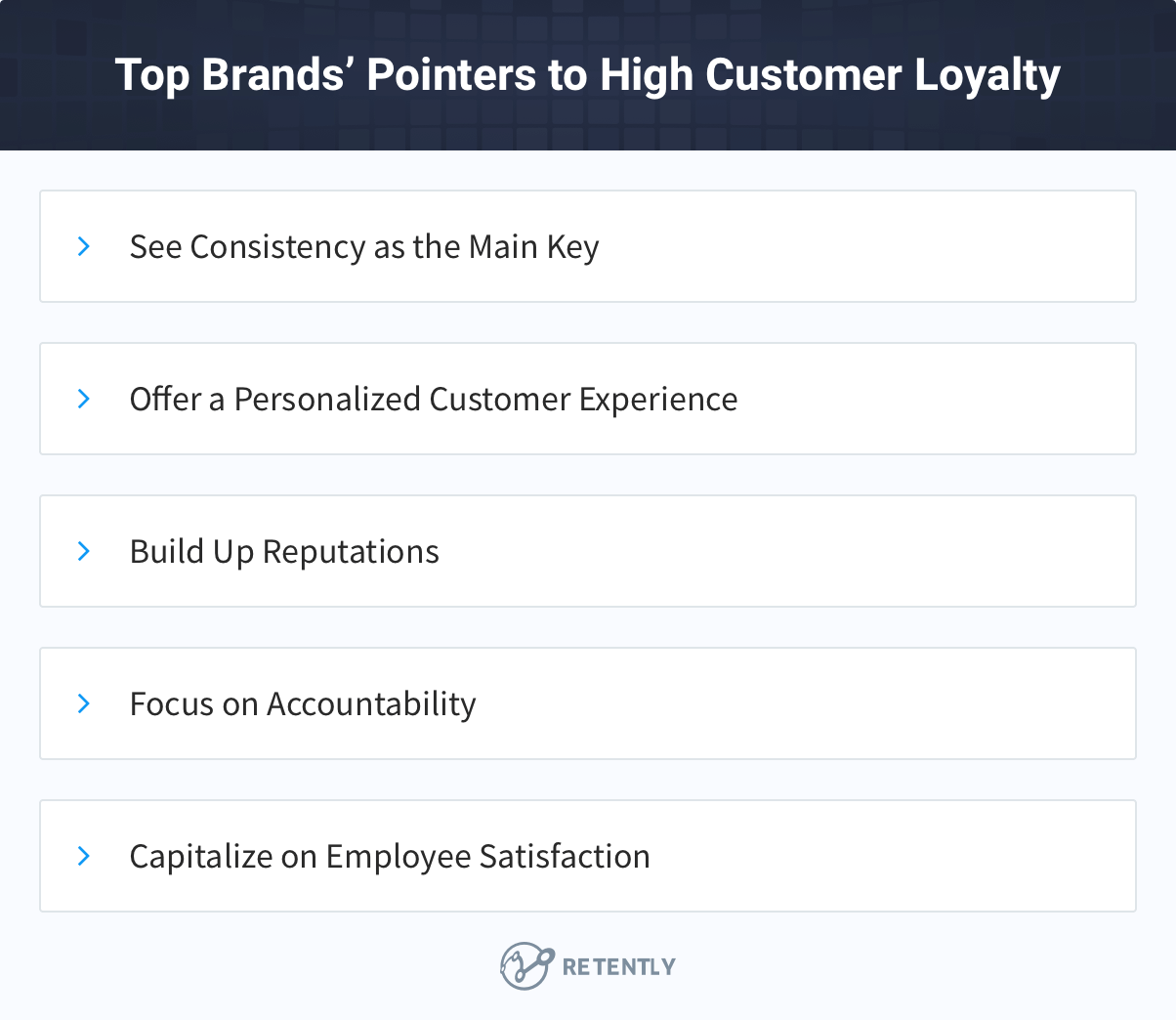
They See Consistency as the Main Key
Once you’ve created a unique product experience that people want to talk about, the next step is to be consistent in your efforts. After all, it takes months to win a customer, but only seconds to lose one.
Amazon provides great customer experiences, regardless of the size and frequency of your order. It doesn’t matter whether you order from the app or through the website – the shopping experience stays consistent.
Netflix lets you stream your favorite movies or shows at the same speed, regardless of your device, the movie genre, the time, or location. Tesla has consistently raised the bar in terms of product innovation, and has always made sure all their customers benefit from car redesigns, like when they changed the seats for all Tesla cars free of charge to improve owners’ comfort levels.
When a company consistently delivers great customer experience, they infuse customer loyalty and motivation to talk about those experiences.
They Offer a Personalized Customer Experience
Don’t underestimate the power of a personalized experience for consumers. According to statistics, 78% of online consumers say that personally relevant content from brands increases their purchase intent, and personalization can reduce acquisition costs to as much as 50%.
Also, according to Genesys Global Survey, 38% of customers believe personalization plays a vital role in delivering happy customer experiences.
How do companies with high NPS scores handle this?
Well, Netflix uses the power of AI and machine learning analytics for personalized video recommendations. Tesla’s buying process is very personal for consumers, and Starbucks’ loyalty program is focused on offering personalized rewards and offers. Plus, we already mentioned that Starbucks employees are encouraged to address customers by name and tailor their interactions to the individual customer.
And Airbnb is already looking into adopting machine learning so that they can offer users a more personalized travel experience.
All in all, personalization makes customers feel that you’re delivering a one-to-one customer experience, thereby improving user engagement and customer satisfaction. And it’s only logical that these happy customers are more likely to recommend your brand than unhappy customers.
They Build Up Their Reputations
According to the paradox of choice, customers feel less anxious when they have fewer choices to make.
For example, you would rather order stuff from Amazon than take the risk of trying a new online store. It’s because Amazon has built up the reputation of being the #1 online marketplace. Tesla has built its reputation as the most reliable provider of electric cars, and Netflix has its reputation as the streaming platform with the biggest content variety.
Starbucks at its turn, has built a reputation as a coffee mega-chain by standing true to more than 40 years of heritage and infusing the human connection into its strategy; as well as for their ongoing commitment to give back to communities through community stores or by encouraging local volunteering.
Reputation is about building customer trust so that they feel comfortable sharing information and transacting on your platform.
It’s the most vital ingredient for brand loyalty because customers are unlikely to recommend brands that have a bad reputation or are not trustworthy.
They Focus on Accountability
“Divide responsibility and nobody is responsible.” – Edward Deming
Amazon has managed to practically kill ‘brick-and-mortar’ businesses by instilling great accountability into their business model. For instance, you can order anything from Amazon, and return it within 15 days if you don’t like it. If that’s not enough, Amazon even refunds customers the price-difference on items they recently bought.
Airbnb, like we already mentioned, offers hosts a $1 million guarantee. When Netflix changes pricing plans, they give existing members a price guarantee for a certain time, letting them use the pricing plan they initially chose. And Starbucks goes as far as offering a 60-day guarantee for its products.
Basically, people buy from businesses that have high accountability and credibility, as it reduces buyers’ anxiety and makes them confident about making future purchases.
They Capitalize on Employee Satisfaction
“You can’t expect your employees to exceed the expectations of your customers if you don’t exceed your employee’s expectations of management.” – Howard Schultz, Chairman and CEO at Starbucks
There is little to no chance of amazing customer experiences without happy and proactive employees that will go above and beyond. Only engaged and motivated employees can be committed to a company’s success.
Looking into the numbers, highly engaged teams achieve a 10% increase in customer ratings and a 20% increase in sales. They are more productive, relate better with customer needs, and hence are better at engaging and retaining customers. Summed up, these capabilities result in 21% higher profitability.
Starbucks understood in their early days the huge impact employee satisfaction has on the overall customer perception of a brand. With the creation of the Bean Stock in 1991, Starbucks made their employees partners, giving them ownership in the company, sharing the company’s success and thus strengthening their relationships.
Moreover, Howard Schultz vowed to leave no one behind – commitment that stemmed from his childhood experiences. This instilled a vision to treat people like family who at their turn would pour their heart into making the company better.
This vision led Starbucks to create one of the most competitive benefits and compensation packages. They have communication systems in place like Ethics & Compliance Helpline – a line which is open for calls around the clock for partners to share their concerns anonymously.
To let partners know they are deeply valued, Starbucks set up various recognition programs and awards such as Coffee Master Awards, Spirit of Starbucks or Bravo! awards for exceeding customer service standards or increasing sales.
According to Airbnb, a world where anyone can belong anywhere starts with a workplace where you feel welcome. Every effort in terms of employee satisfaction is thus directed towards creating amazing physical, emotional, intellectual, virtual and aspirational experiences for the Airbnb staff.
The brand opted for a shift from Human Resources to Employee Experience, an approach pioneered by Mark Levy – former Global Head of Employee Experience at Airbnb – and his team. The impact of such an approach is reflected by great employee satisfaction levels, with 90% of Airbnb employees recommending the company as a great place to work at.
Amazon was ranked #2 on Forbes World’s Best Employers 2020 list. During the COVID crisis, on top of the $15 minimum wage and other benefits, they launched new initiatives like developing their COVID-19 testing capacity and launching a $25 million relief fund to support partners during the crisis.
Promoter companies continue to put all their effort into the team’s well-being, aware that happy employees create the best customer experiences. eNPS surveys are great for this purpose, since they allow you to keep a pulse on employee satisfaction at all times. Starbucks for example runs a Partner View survey yearly to learn more about employees’ concerns and their satisfaction with their job.
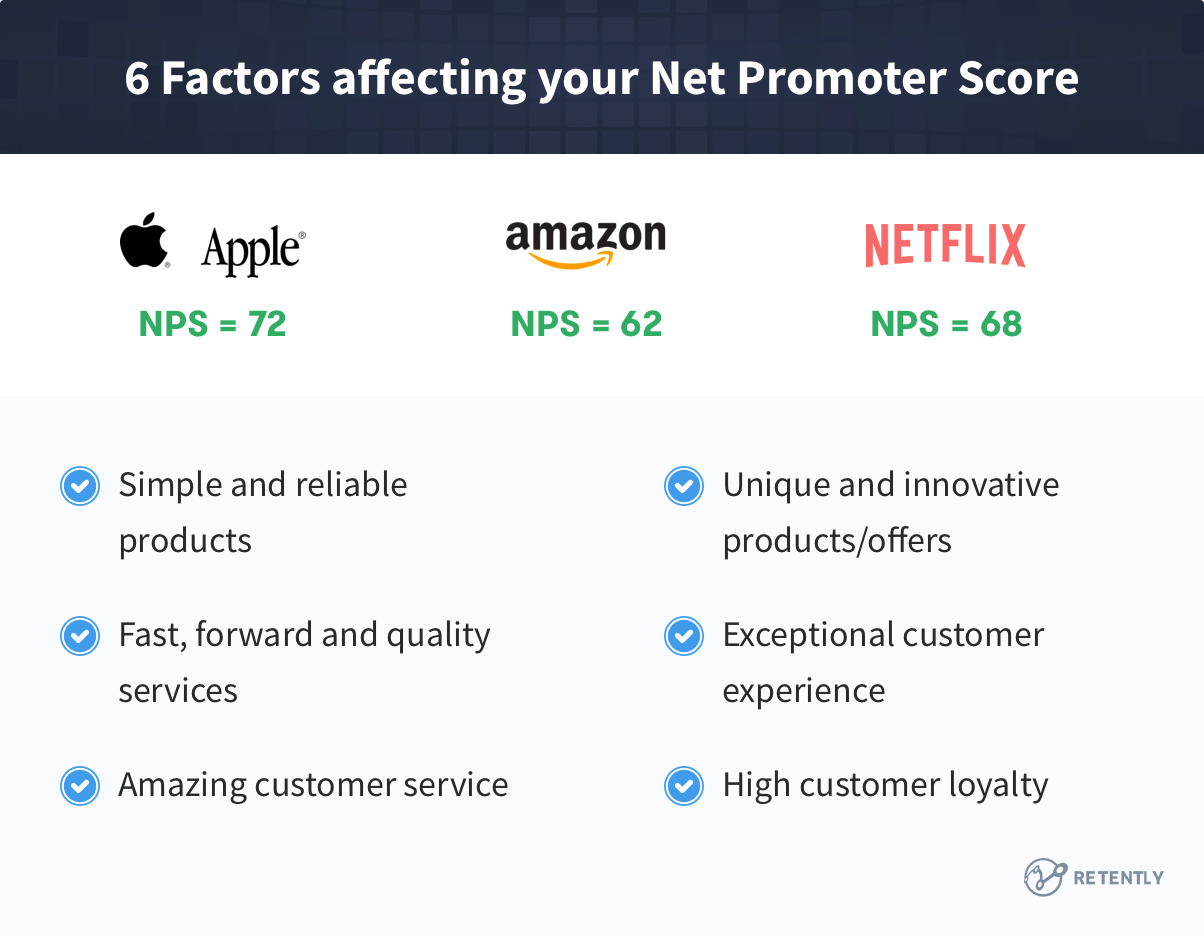
Want to Find Out What Your Own NPS Is?
Before you start making any policy and service/product changes, it’s best to find out roughly how many Detractors, Passives, and Promoters you have, so that you attempt adjustments that really matter to your customers.
You might think that finding out the NPS score of your company can be difficult, but it doesn’t have to be – if you use an automated platform like Retently. We make it very easy to send targeted NPS surveys to your customers by giving you the ability to segment them into different categories.
Also, Retently lets you customize your surveys to your heart’s content, set up automation scenarios, and survey customers through multiple channels – like email or in-app surveys. Best of all – you can integrate our platform with other services you use to automate the feedback-gathering process even further.
So, feel free to browse our plans and see which ones work best for you.























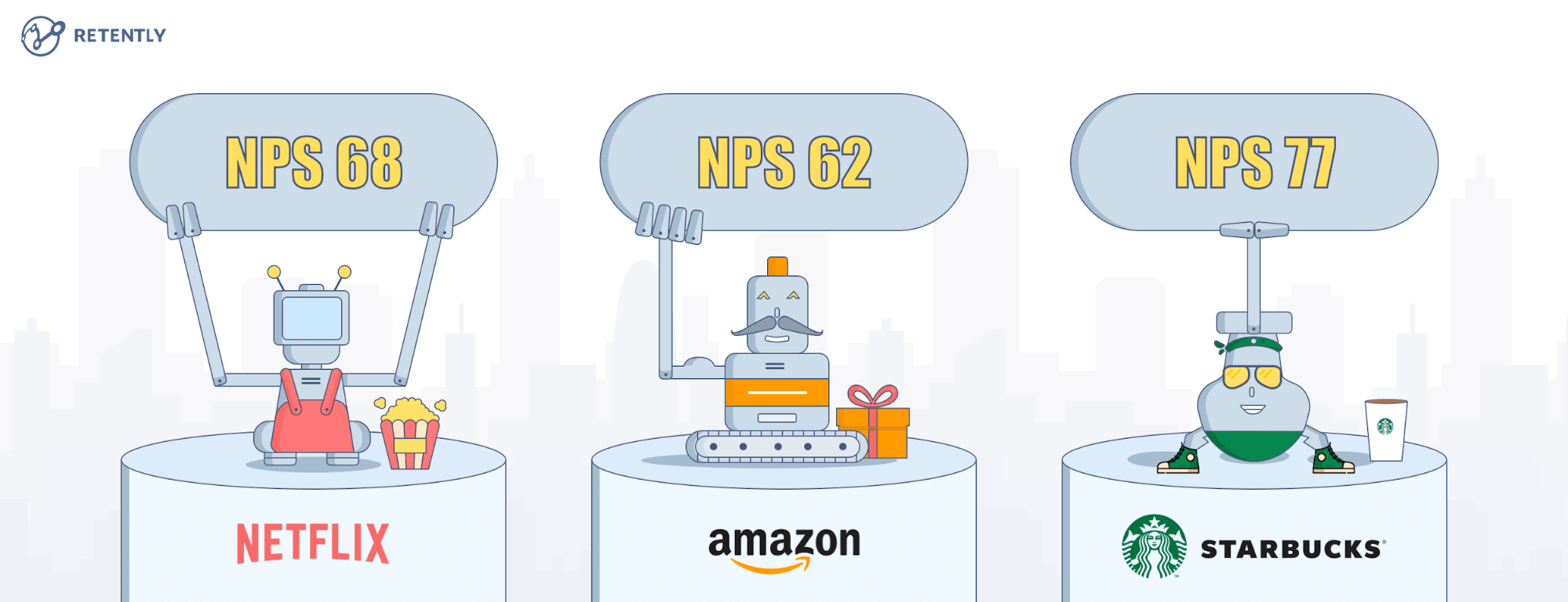






 Alex Bitca
Alex Bitca 
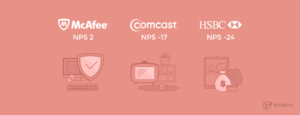
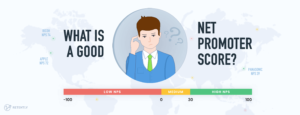
 Greg Raileanu
Greg Raileanu 

